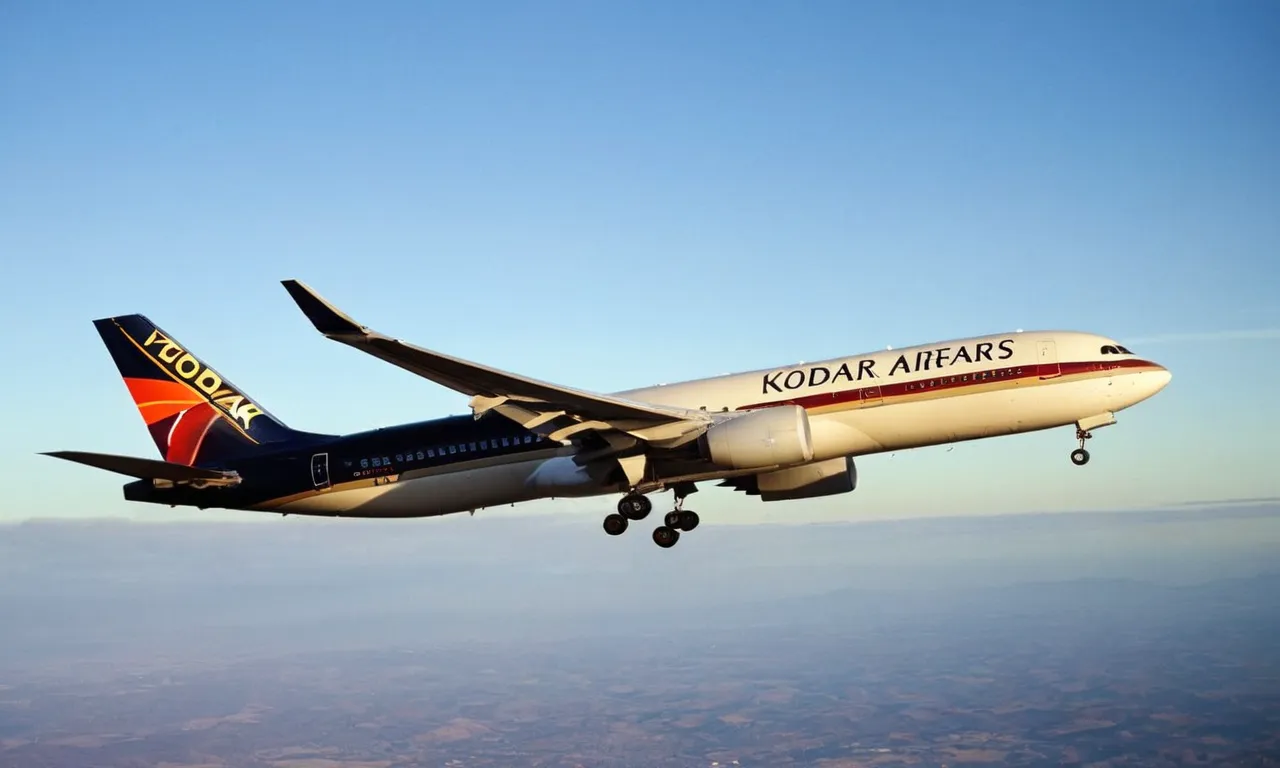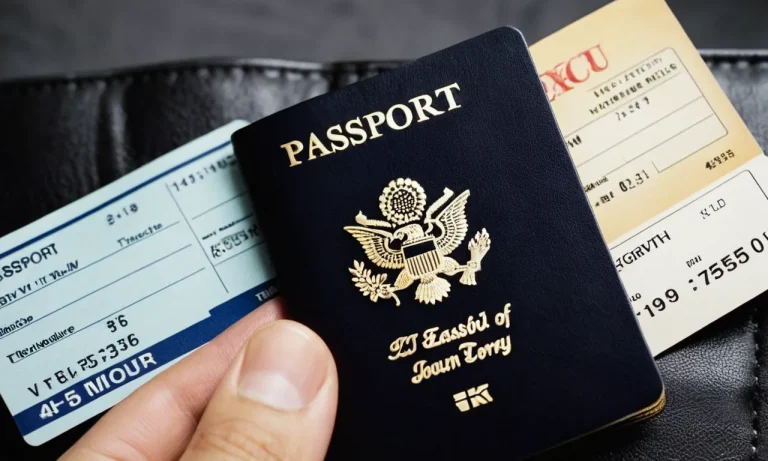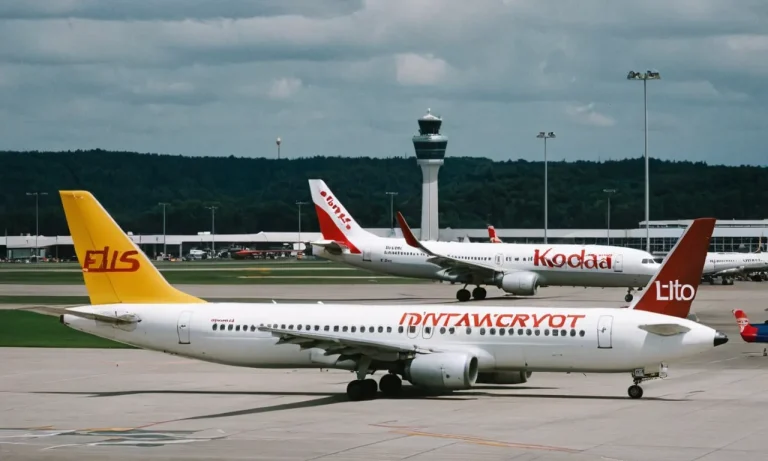Turbulence is one of the biggest fears of many air travelers – the unexpected bumps and jolts that come out of nowhere can be anxiety-inducing for even the most seasoned fliers. But while turbulence is undoubtedly uncomfortable, can it actually take down a commercial plane and cause it to crash?
The quick answer is: no, turbulence alone cannot crash a modern commercial aircraft.
In this comprehensive article, we’ll examine the physics of turbulence, look at real-world examples of turbulence-related incidents, break down what happens to aircraft when they encounter rough air, and explain why commercial airliners are engineered to withstand even extreme turbulence.
What Exactly is Turbulence?
Turbulence is a phenomenon that occurs during flights and is often a cause of concern among passengers. It refers to the irregular and unpredictable movements of air that can create a bumpy ride for those on board.
While turbulence can be uncomfortable, it is important to note that it is a common occurrence and does not pose a significant threat to the safety of the aircraft.
Definition and causes of turbulence
Turbulence can be defined as the rapid and random changes in airflow that result in variations in air pressure and velocity. It can be caused by a variety of factors, both natural and man-made.
One of the most common causes of turbulence is atmospheric conditions, such as changes in wind speed and direction.
Additionally, turbulence can also be triggered by the presence of mountains, thunderstorms, or jet streams. In some cases, even the wake turbulence generated by larger aircraft can lead to turbulence for smaller planes.
Types of turbulence patterns
Turbulence can manifest in different patterns, each with its own characteristics and effects on the aircraft. The most common types of turbulence include:
- Clear Air Turbulence (CAT): This type of turbulence occurs in clear skies without any visible weather disturbances. It is often unpredictable and can be challenging for pilots to anticipate. CAT is commonly encountered at high altitudes, particularly in jet streams.
- Convective Turbulence: This form of turbulence is associated with thunderstorms and can be particularly intense and severe. Convective turbulence is caused by the rapid updrafts and downdrafts of air within a storm system.
- Mountain Wave Turbulence: As the name suggests, this type of turbulence is caused by the interaction of airflow with mountains or large hills. When strong winds encounter mountain ranges, they can create waves of turbulence on the lee side of the mountains.
- Wake Turbulence: This type of turbulence occurs when an aircraft generates vortices in its wake. These vortices can be hazardous for smaller aircraft flying in close proximity to larger planes.
It is important to note that turbulence is a normal part of flying and is something that pilots and aircraft are designed to handle.
Modern airplanes are built to withstand turbulence and are equipped with advanced technology to help pilots navigate through turbulent areas.
While turbulence can be nerve-wracking for passengers, it is typically not a cause for alarm and does not pose a significant risk to the safety of the aircraft.
Notable Turbulence Incidents
United Airlines flight 232
The turbulence was caused by a thunderstorm, and it resulted in the tragic loss of 112 lives. Despite the efforts of the pilots to regain control, the plane ultimately crashed and broke apart upon landing.
This incident serves as a reminder of the importance of monitoring weather conditions and taking appropriate precautions when flying.
Pilots are trained to avoid areas of severe turbulence whenever possible, but sometimes these conditions can be unpredictable.
How Aircraft React to Turbulence
Forces and stresses on the airframe
When an aircraft encounters turbulence, it experiences various forces and stresses on its airframe.
Turbulence is caused by fluctuations in the airflow, which can result from weather conditions, such as strong winds or convective activity.
These fluctuations can cause the aircraft to shake or jolt, leading to passenger discomfort and anxiety.
However, it’s important to note that turbulence itself does not pose a significant threat to the structural integrity of the aircraft.
Modern commercial airliners are designed to withstand the forces and stresses of turbulence.
The airframe, which includes the fuselage, wings, and tail, is built using durable materials like aluminum alloys or composites that are capable of withstanding the loads imposed by turbulence.
The wings, in particular, are designed to flex and bend to absorb the forces exerted by the turbulence, ensuring the safety of the aircraft and its passengers.
It’s worth mentioning that the intensity of turbulence can vary, ranging from light to severe. In severe cases, the aircraft may experience sudden and extreme movements.
However, these instances are rare, and pilots are trained to navigate through turbulent weather conditions safely.
They can make use of weather radar and reports from other aircraft to avoid areas of severe turbulence, ensuring a smooth and comfortable flight for passengers.

Turbulence safety features in modern airliners
Modern airliners are equipped with various safety features to mitigate the effects of turbulence and ensure the safety of passengers and crew.
One of these features is the turbulence-detection system, which uses weather radar and sensors to detect and track areas of turbulent weather.
The information gathered by this system is then used by pilots to make informed decisions about the flight path, allowing them to avoid areas of severe turbulence whenever possible.
In addition to the turbulence-detection system, aircraft also have advanced autopilot systems that can automatically adjust the aircraft’s attitude and flight path to maintain stability during turbulence.
These systems can make minor adjustments to the control surfaces, such as the ailerons and elevators, to counteract the effects of turbulence and keep the aircraft level and steady.
Furthermore, cabin interiors are designed with passenger comfort and safety in mind.
Seats are built to withstand the forces of turbulence and are equipped with safety belts that keep passengers securely fastened during turbulent conditions.
Cabin crew are also trained to secure loose items and ensure that the cabin is prepared for turbulence, minimizing the risk of injuries to passengers.
Turbulence Preparation and Avoidance
Weather monitoring and routing
When it comes to turbulence, preparation is key. Airlines invest significant resources in monitoring and predicting weather conditions to ensure the safety and comfort of their passengers.
Meteorologists use advanced technologies and data from various sources, such as satellites and weather radars, to track weather patterns and identify areas of potential turbulence.
This information is then shared with pilots and flight dispatchers who use it to plan flight routes that minimize the risk of encountering turbulence.
By analyzing weather patterns and trends, airlines can make informed decisions about the best routes to take, avoiding areas with known turbulence or adjusting altitude to steer clear of rough air.
This proactive approach allows pilots to plan their flights with the aim of providing a smooth experience for passengers.
Inflight turbulence procedures and compliance
Despite careful planning and routing, turbulence can still occur unexpectedly during a flight. Airlines have specific procedures in place to deal with inflight turbulence and ensure the safety of passengers and crew.
One of the most important aspects is compliance with seatbelt regulations.
Passengers are advised to keep their seatbelts fastened whenever they are seated, even when the seatbelt sign is turned off.
This precautionary measure is crucial as it helps minimize the risk of injuries in case of sudden turbulence.
Pilots also play a vital role in managing turbulence. They receive constant updates on weather conditions and can communicate with air traffic control to request rerouting or altitude changes if necessary.
Additionally, modern aircraft are equipped with advanced technology that can detect turbulence ahead of time, allowing pilots to take appropriate actions to avoid or minimize its impact.
In the event that turbulence is encountered, pilots follow established procedures to ensure the safety of the aircraft and its occupants.
These procedures may include adjusting the aircraft’s speed, altitude, or course to find smoother air.
Pilots are trained to handle turbulence and are experienced in making the necessary adjustments to maintain stability and passenger comfort.
Conclusion
While turbulence directly causing a plane crash is exceedingly rare, it can significantly stress aircraft and in extreme cases lead to dangerous situations. However, modern commercial jets are engineered to withstand even severe turbulence.
Through proper weather monitoring, turbulence avoidance when possible, and strict adherence to flight procedures, the risk of turbulence leading to an accident on commercial flights is extremely low.






